“In the Heights” Choreographer Christopher Scott on Dancing in The Streets
When Hamilton creator Lin-Manuel Miranda needed a director to adapt his 2008 stage musical In the Heights for the big screen, he enlisted Jon M. Chu, director of Crazy Rich Asians and mastermind behind Hollywood’s Step Up dance movie franchise. Chu, in turn, picked his go-to choreographer Christopher Scott to create the movie’s elegantly gritty dance sequences, performed to riveting effect by star Anthony Ramos and his castmates.
Scott learned his craft by dancing for tips on the streets of Santa Monica and later forged a tight bond with Chu and cinematographer Alice Brooks when they created the 2012 YouTube series The LXD: The Legion of Extraordinary Dancers. He later choreographed Step Up Revolution and Step Up All In for Chu. Those successes led to three Emmy nominations for the ABC series So You Think You Can Dance. For Scott, the collaborative spirit has remained intact over the years. “It’s funny, because no matter how big the budget gets, the process for Jon, Alice, and me really doesn’t change,” he said. “With In The Heights, we had our little group of collaborators joining up with Lin-Manual’s side, with [writer] Quiara [Alegria Hudes] [music executive producers] Alec Lacamoire and Bell Sherman. They’re like the Broadway version of us and their process is very similar. No ego, just this beautiful flow of creativity and a ‘best idea wins’ kind of vibe.
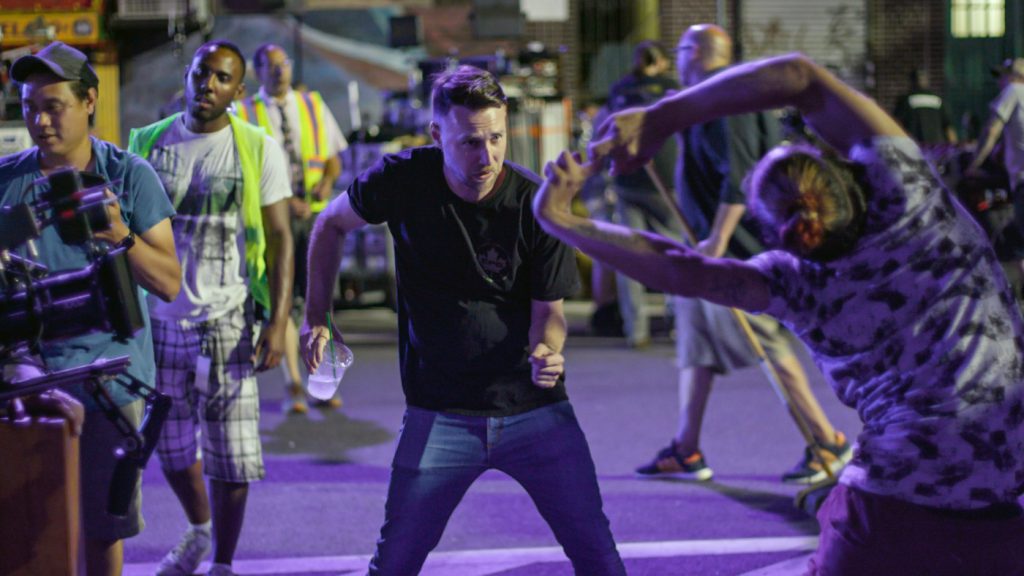
COPYRIGHT: © 2021 Warner Bros. Entertainment Inc. All Rights Reserved.
Zooming from his Los Angeles home, Scott talks about tailoring his dance sequences to Manhattan’s Washington Heights neighborhood, where most of In The Heights was filmed, and explains why he had to yell at the top of his lungs to give his dancers direction.
Locations play a key role in shaping the neighborhood vibe for this movie. What was your process for designing dances around these real-life settings in Washington Heights?
It’s funny because one of the big themes of the movie is about how this character Vanessa gets her inspiration from the neighborhood, and as filmmakers, we were doing the same thing. You want inspiration? Go walk around the neighborhood. Go sit at the park. Look at this staircase thing. I’m sure they didn’t design it thinking somebody was going to dance there one day, but when you see it you think, “That’s a real stage in a real place that’s going to highlight these powerful women as they’re hanging out at the pool.” If you look and listen, it all just starts to speak to you.
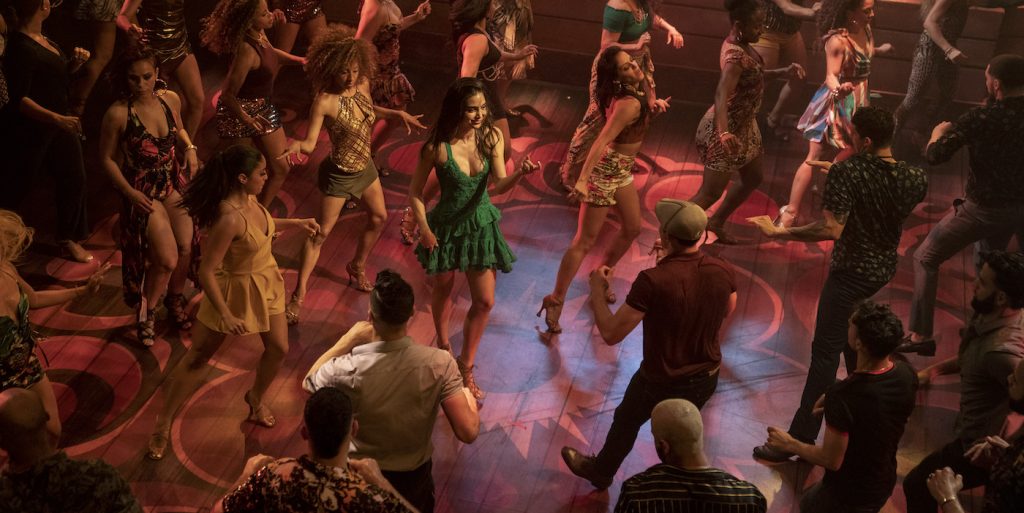
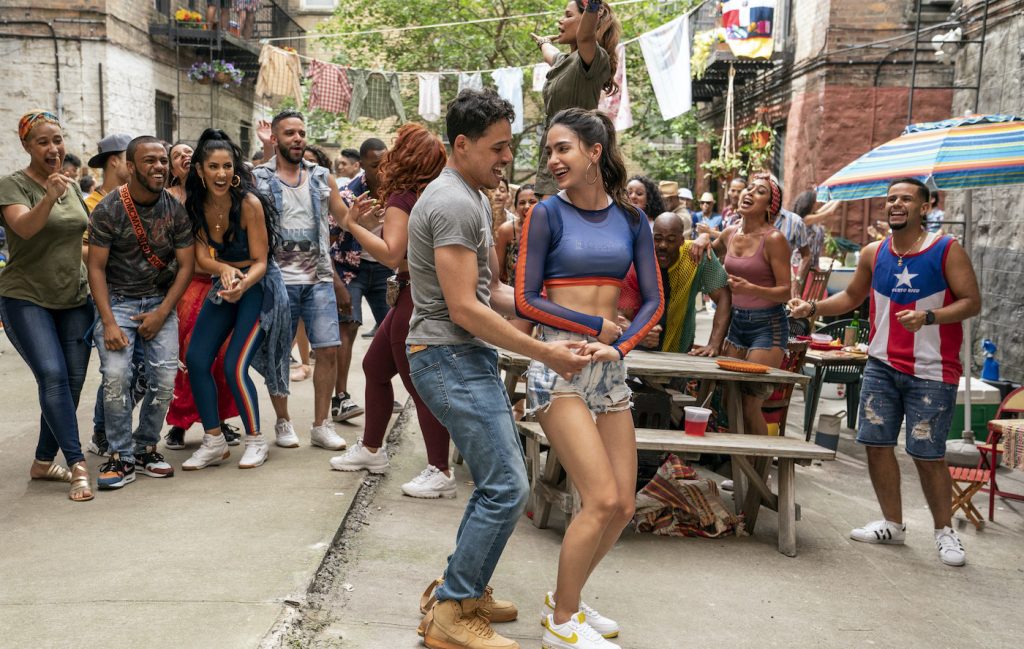
You’ve worked with director Jon M. Chu several times before. I imagine by now you have a shorthand for what he wants you to achieve with your choreography within a given scene?
I’m very lucky because Jon’s vision is always so clear. He doesn’t just tell you, “Okay we’re going to have the dancers on the wall to enhance the visuals.” No, he wants it to feel like the characters’ love has no boundaries so let’s trim it down. He sets up such a strong foundation, there’s no second-guessing and then it becomes my job to fill in those blanks.
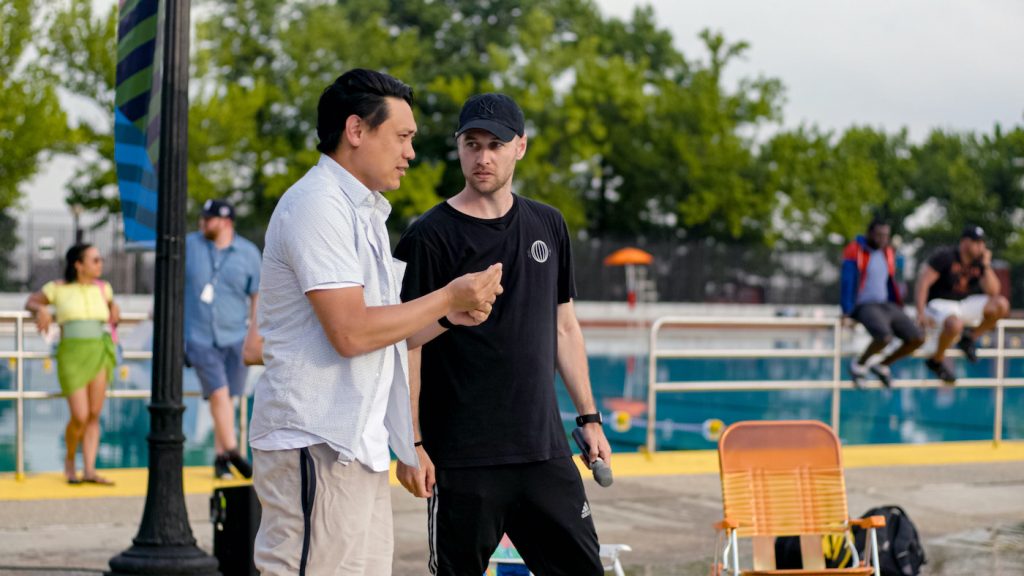
In several scenes, your dancers take over the street of this very lively neighborhood. How much time did you have to get these dance sequences in the can?
We had very limited access to a lot of these spaces. For example, the opening number we’d only have like two minutes at a time on the street where they’d closed it off from traffic. You go, “Okay everybody go go go!” Two minutes later, “Everybody get off the street and remember where you were when we stopped!”
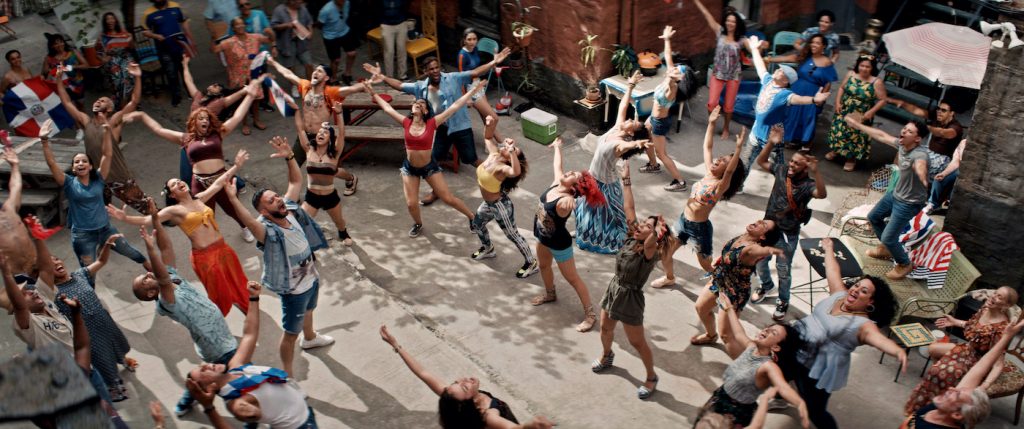
You designed this epic outdoor swimming pool sequence with dozens of women splashing around in a way that feels reminiscent of Busby Berkley’s overhead shots from the 1930s. How did you go about putting that water dance together?
That was the hardest sequence in the film because these are dancers, they’re not swimmers. We’d talked about hiring a synchronized swimming group but looking for one that represented the Latinx community? We just couldn’t find it. We weren’t going to sacrifice the representation over the skill of synchronized swimmers so we decided to do our own version. Our dancers stepped up and made it happen to the best of their abilities. I love the version we came up with because it’s a bit of an homage to Busby Berkeley but it also has this element of representation.
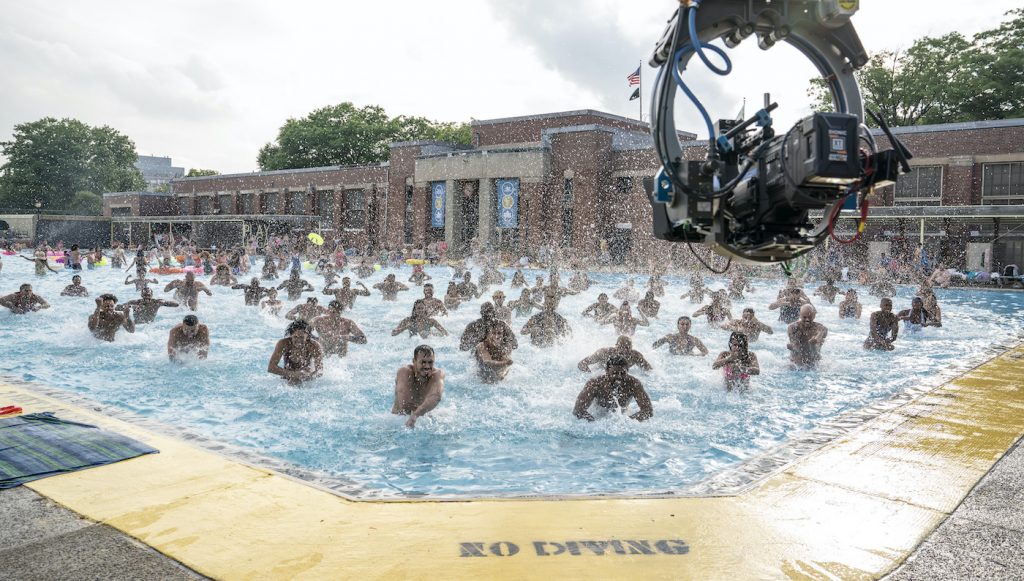
You’re based in Los Angeles but your dances feel rooted in a very specific way to the character of this Brooklyn neighborhood. How did you find your footing in Washington Heights?
In L.A. I created some stuff with a skeleton crew of dancers but when I flew out to Washington Heights, a lot of that stuff went right out the window because the neighborhood itself is such an inspiration. I remember at the park, for example, I’d sit at the park for hours, watch things, walk things out, time it out. I’d have my little iPhone, playing Lin-Manuel’s music. In a dance studio, you can get a lot of work done but when you go to the actual space, the dance just pours out of you. This neighborhood is the story. This is the reality. It’s right there if you just open your eyes.
Anthony Ramos’ Usnavi character runs a bodega and the dance you stage there feels very authentic. Did you guys take over somebody’s shop for the shoot?
The bodega was built on a soundstage by our production designer Nelson Coates. The first time I walked in there I said, “Nelson, you killed it.” One of the most important things I’ve learned to do as a choreographer is to talk to your actors. Anthony Ramos is the dream guy to play Usnavi because he grew up in [nearby Brooklyn neighborhood] Bushwick. Anthony knows what it means to walk into a bodega. I’m from L.A.—I don’t know. Working out the dance stuff, Anthony became my gauge for, ‘Is this real or is this bullshit?’ He might say yeah, or he might say “Actually, we’d probably do it more like this.” Movies become more authentic when you step aside and let people who know more than you do tell you how it’s supposed to be.
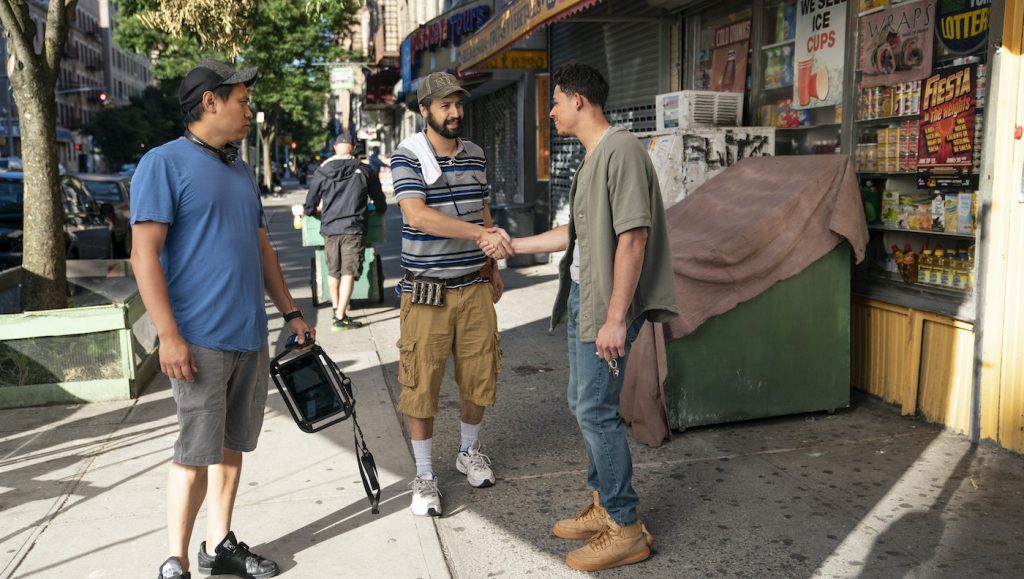
When you’re directing dozens of dancers outdoors with all this noisy city life going on all around you, how did you make yourself heard?
We weren’t allowed to have microphones for the street scenes because they had a noise ordinance. As soon as you go through a speaker you’ve got the city telling you to keep it down. So it was just my voice, yelling to the actors as loud as I could. That was actually a blessing because there’s so much energy, between Jon and me yelling “let’s go!” at the cast—they’re going to give you the same energy back.
You earned three Emmy nominations for choreographing So You Think You Can Dance but with Heights, you’re working on a much larger scale. Did you find that there was a kind of strength in numbers?
Most movie musicals stick to that 30 to 40 dancers, but here we had 75 dancers for that opening number and 90 for the pool. Having such a large group of people makes it feel powerful as a way of representing a community with all these different stories. I know it’s expensive to hire dancers, but it’s worth the money.

You went to Hollywood High School in Los Angeles. Were your parents in show business?
No. My mom moved us to L.A. from Maryland because my sister and I were struggling there and weren’t doing well in school. If you’d told me then I was going to be a dancer, I would have laughed. But just like Washington Heights has inspiration everywhere, so does Hollywood.
Your choreography has so much personality and drama, it feels like a perfect fit for In The Heights. How did develop your style?
I was inspired by street dance. If you look closely at flexing or bone-breaking, for example, some people might watch that almost like it’s a freak show. But if you watch what they’re actually doing, there’s so much expression in it. And I also love ballet, the way they bring in groups from one direction and then another group swoops around seamlessly. So that’s how my style developed. I’ve been almost on this mission to showcase street dancing as a beautiful art form and putting it together with ballet. It’s like B-boys alongside ballerinas.
When did you get into dance?
When I was fourteen, these tap dancers named John and Sean Scott came to my school. They were street performers at the Third Street Promenade in Santa Monica. I would just go dance with them, for tips, and it changed my life. For the first time, I realized “I’ll never be homeless.” We didn’t grow up with a lot of money. I had no direction but all of a sudden I saw that I could always go out and dance for tips. Some people look down on street performers, but it’s an amazing craft because you really have to pull in your audience. Most people are there to shop. Nobody has to give you money. “Pull the car around let’s get out of here.” But if you can grab that audience, get them to reach into their pocket and pull out a five-dollar bill, or a twenty—or I’ve been given $100 bills—that’s entertainment. That’s the power of dance.
In The Heights hits theaters and HBO Max on June 11.
Featured image: Caption: (Center l-r) DASCHA POLANCO as Cuca, DAPHNE RUBIN-VEGA as Daniela and
STEPHANIE BEATRIZ as Carla in Warner Bros. Pictures’ “IN THE HEIGHTS,” a Warner Bros. Pictures release. Photo Credit: Courtesy of Warner Bros. Pictures



